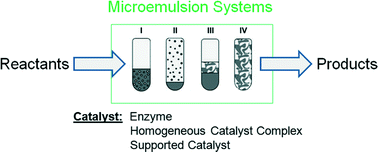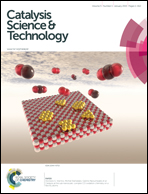Microemulsion systems for catalytic reactions and processes
Abstract
Among the available green solvents, microemulsion systems show superior properties for catalytic reactions and processes which can be easily tuned by the selection of an appropriate surfactant. In this review, we show examples for bio-, homogeneous and heterogeneous catalysis and discuss the parameters which are important for successful implementation of these systems. Based on the kind of catalysis, they allow for the reuse of dissolved catalysts or even for a better solubilisation of hydrophobic reactants. However, their phase behaviour which strongly depends on composition and temperature as well as surfactant/catalyst interaction has to be studied in detail.


 Please wait while we load your content...
Please wait while we load your content...